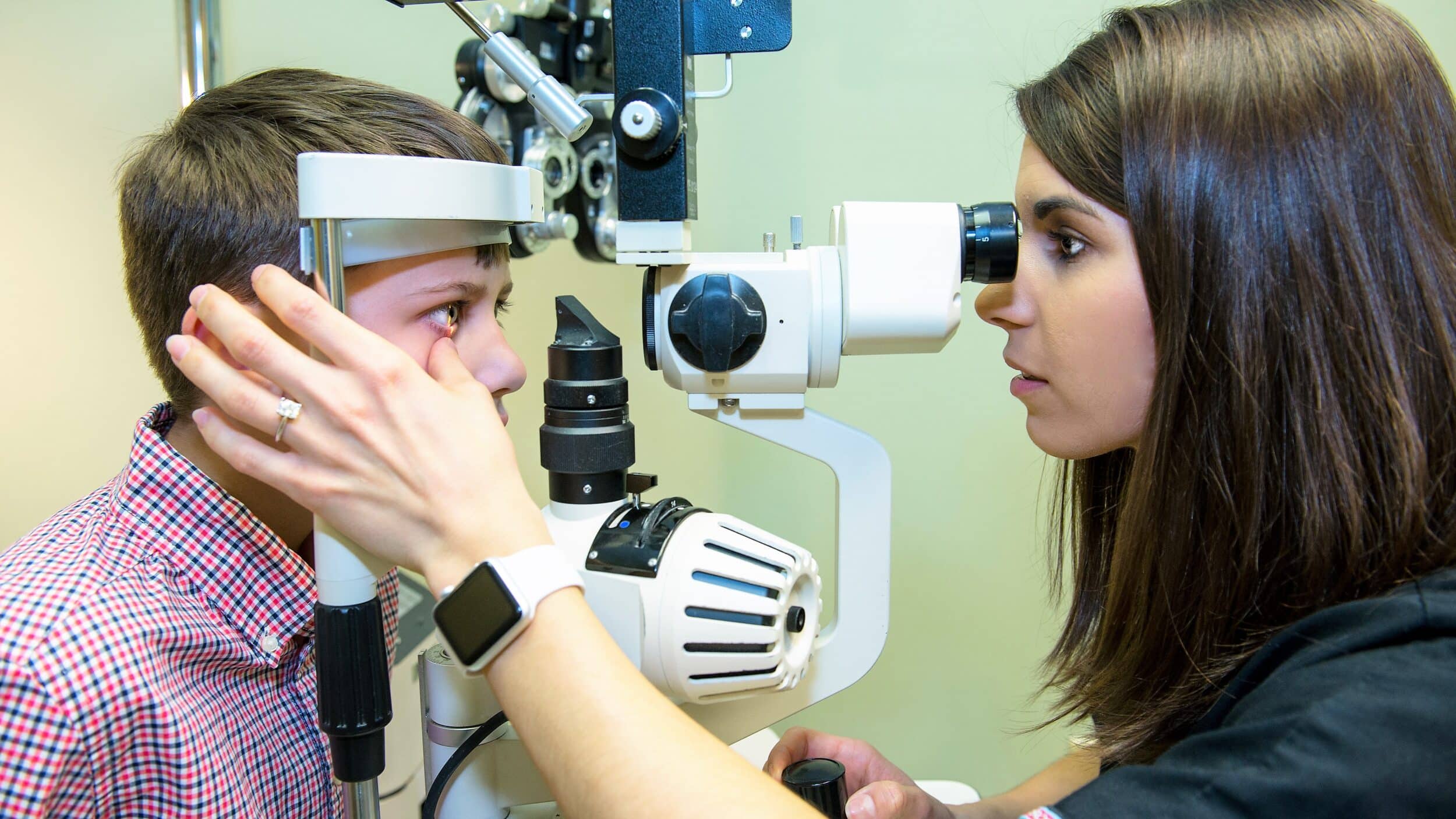
“Older” eyes seem to garner most of the attention concerning vision care-and for good reason. As we age, our risks for eye diseases like cataracts or macular degeneration tend to rise dramatically.
But that doesn’t mean we shouldn’t be concerned for “younger” eyes: Although eye disease occurrence among children is much lower than in adults, they can still have issues with their vision. In fact, it might be more difficult to detect eye problems in a child than in an adult.
“Children tend not to complain about any problems they have seeing, because they’re not old enough yet to know the difference,” says Dr. Anna Patterson Armstrong, a Therapeutic Certified Optometrist with Hattiesburg Eye Clinic.
That’s why eye exams are just as important for children as for older adults-to identify problems early before they can interfere with their overall development.
In recognition of Children’s Eye Health and Safety Month this August, here’s a few things you need to know about this important kind of physical exam, as well what you can do to help identify possible vision problems sooner in your children.
- Vision screenings and eye exams aren’t the same. It’s easy to assume that a screening your child receives is the same as an eye examination. The terms actually describe two different procedures.
“A screening serves more as an indicator of problems with vision or eye alignment than as a definite diagnosis,” says Dr. Armstrong. “On the other hand, an eye examination with dilation can provide a more in-depth probing of the eyes for disease. They also help ensure more accurate prescriptions for young children.”
So, although a screening may “sound the alarm” about a possible vision problem, they can’t provide the full picture of eye health that an examination can. Dr. Armstrong says it’s thus a good idea for children to undergo eye exams with a vision professional at six months of age, again between ages 2 and 3, and once more before they start school. - Vision concerns vary by age. “With newborns and toddlers, we’re primarily concerned about eye alignment and a normal “red reflex,” the reflection of reddish light from the back of the eye, which can help us detect abnormalities,” says Dr. Armstrong. “With older children we’re looking for more subtle eye alignment problems, as well as issues with focusing and accommodation, which can affect their ability to read.” Dr. Armstrong also says it’s important to catch amblyopia (more commonly known as “lazy eye”) as early as possible-something that might be missed by a screening alone. And for all ages of children, it’s important to make sure their eye prescription is within normal ranges.
- Stay alert to possible vision issues. As mentioned before, children can’t always communicate clearly that they’re having trouble seeing. But there are a few signs parents can watch for that may indicate a vision problem.
“Parents should pay attention to things like their children squinting, complaining of frequent headaches, or having difficulties reading. Another more subtle sign would be their lack of interest in activities that require more detailed vision use,” says Dr. Armstrong.
If you notice these or other unusual occurrences related to vision, Dr. Armstrong advises scheduling an exam with a vision professional as soon as possible.
Good eyesight is important at all ages, but especially with children. Vision is critical to their growth and development, and their ability to learn at school. Regular eye exams-as well as keeping tabs on the subtle signs of vision difficulties-will help ensure your child has the best eyesight possible.
To learn more about protecting your children’s vision visit us at our website. To learn more about how Hattiesburg Eye Clinic can improve your vision health, call 601-268-5910 (or toll-free 800-624-8254) or schedule a consultation with us at www.hattiesburgeyeclinic.com/contact-us/
